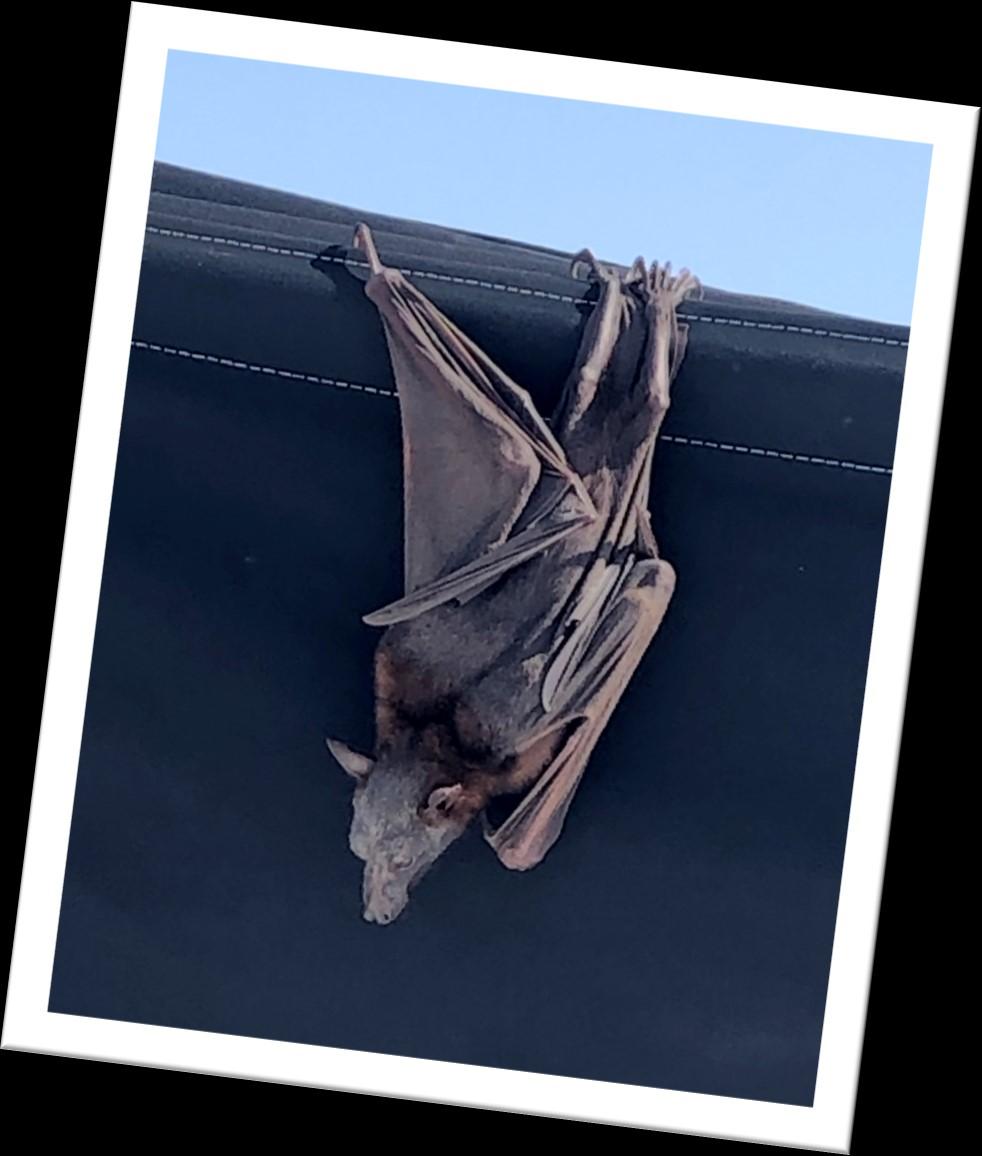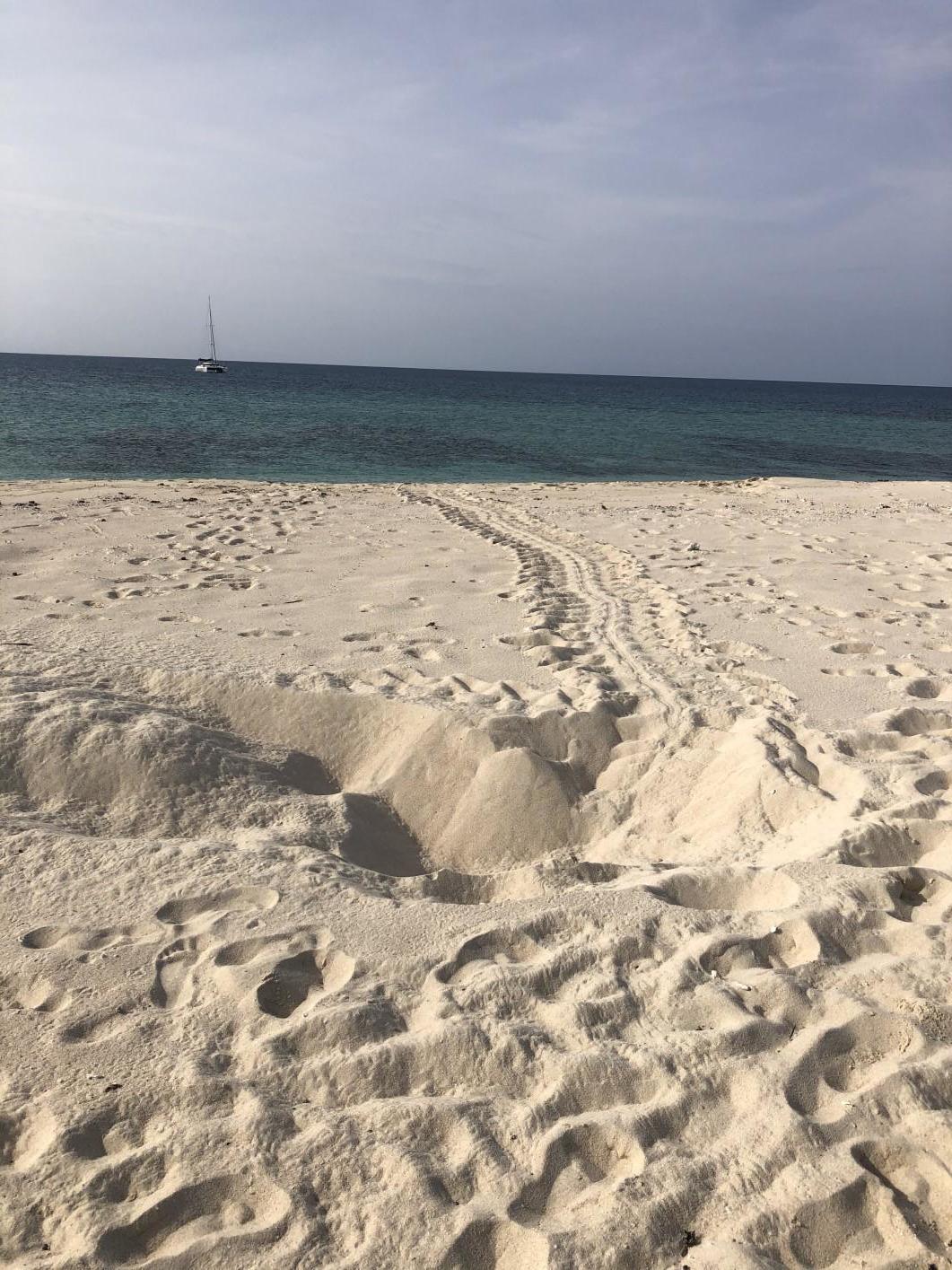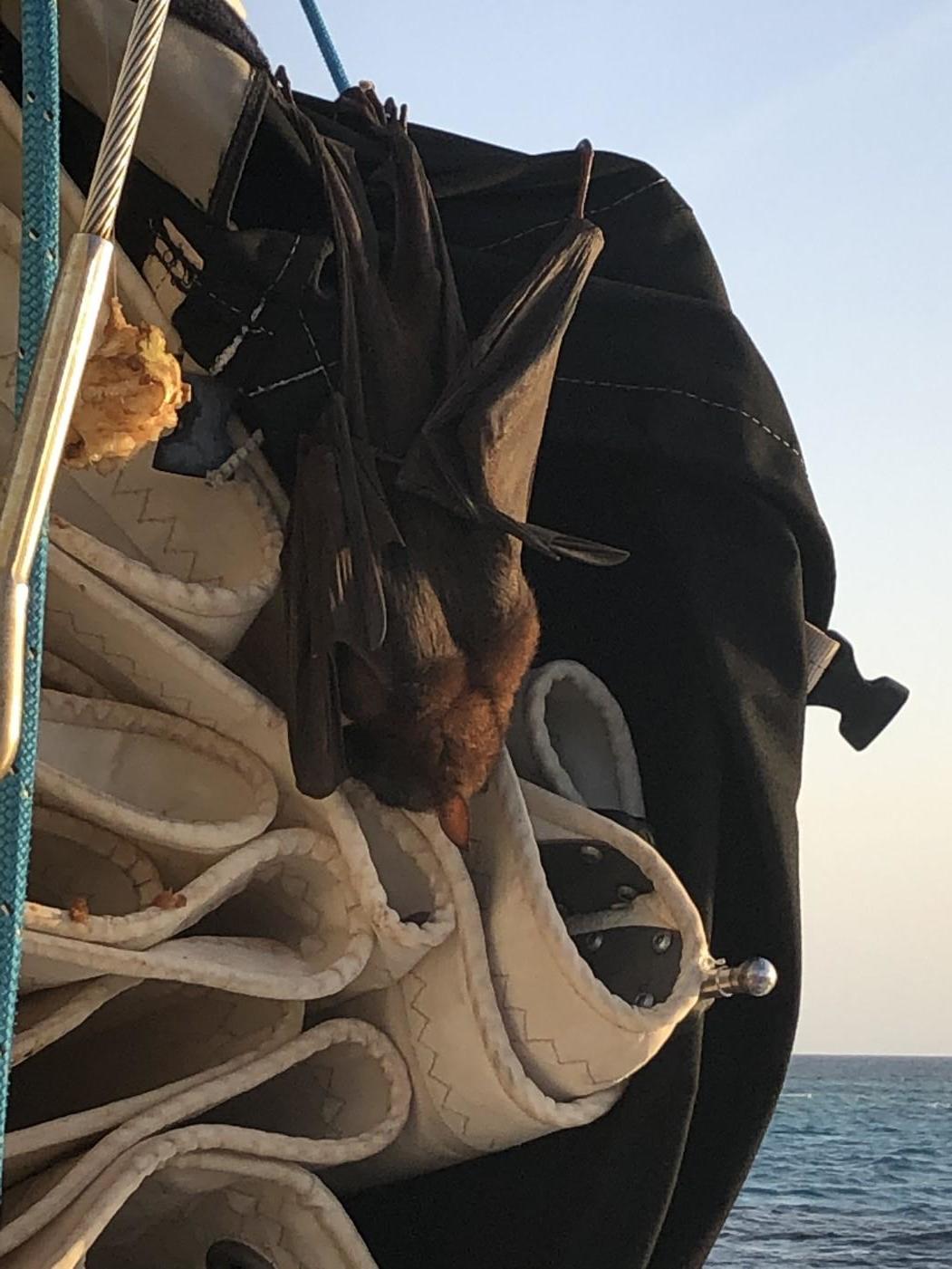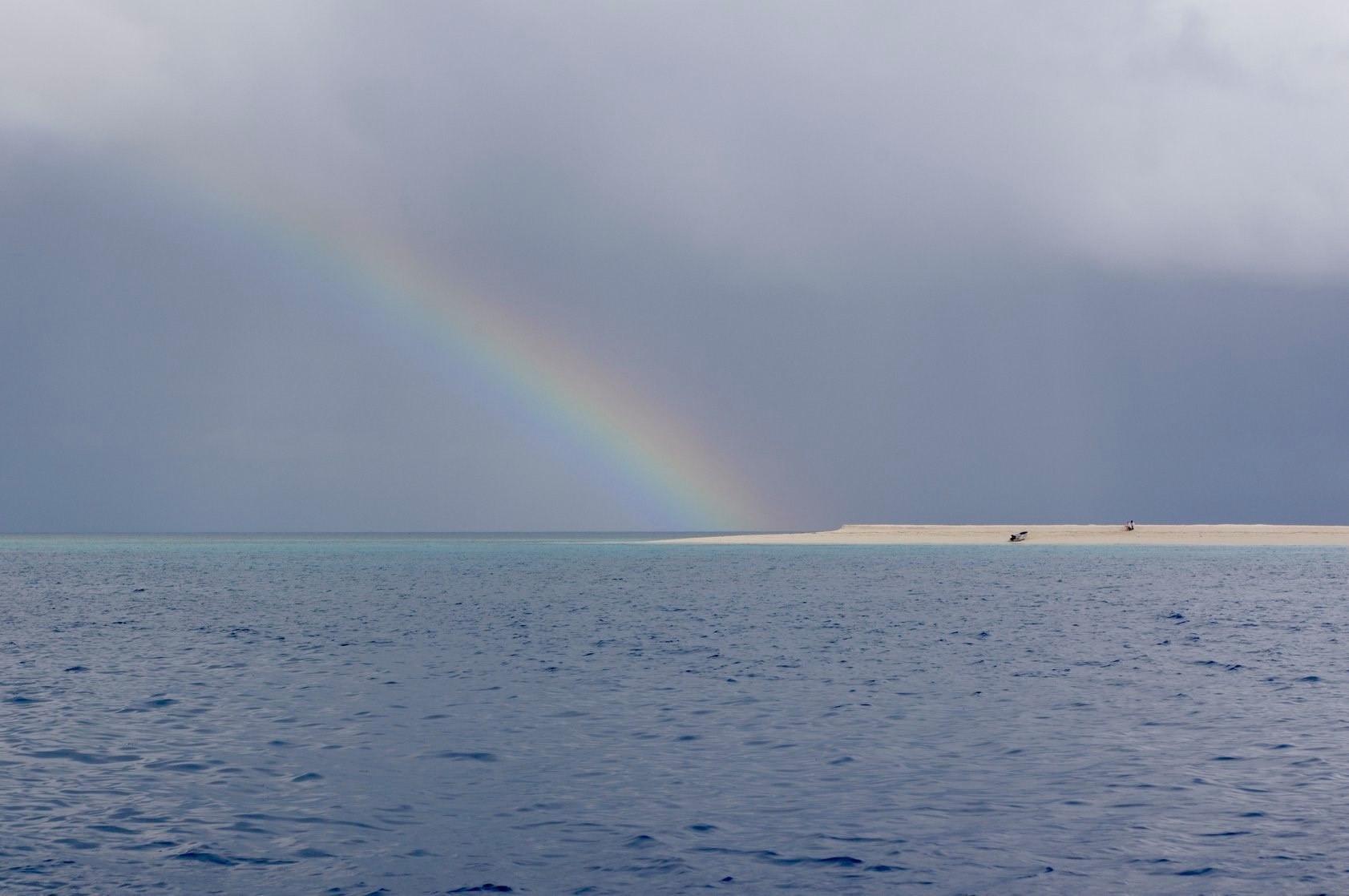
9 minute read
Mackay Reef Surprise: Justine Porter
Mackay Reef Surprise

Advertisement

Justine Porter


Looking back towards the mainland as Red flew away.


It’s cyclone season, however we decided to stay within the cyclone belt in Far North Queensland, Australia, to take advantage of the beautiful warm tropical days between storms.
Not many sailors like to risk being up here, but we have a solid performance blue water catamaran, Shima, and a plan for any cyclonic weather. We lived in the territory for 20 years and are well accustomed to cyclones and the dangers, but also know it is a stunning and variable time of year with so much to offer the more adventurous sailors. The public moorings are generally vacant, and you can go out to stunning reefs and often have them to yourselves!
On the downside, sometimes the variability of the winds swinging a full 360 degrees in a 24-hour period can make choosing anchorages challenging, and the lightning belts on ridges are often ferocious and something we fear more than the storms themselves.
We chose to go out to Mackay Reef, a beautiful sand cay north of Port Douglas with stunning coral and plenty of fish to play
Red.
with whilst snorkelling, to sit out some stormy weather on the Great Barrier Reef. We like the Great Barrier Reef Marine Park (GBRMPA) courtesy mooring buoys. They are well serviced, rated for up to 35 knots, and to us are preferable when the winds shift during these storms from the south east to north west.
We enjoyed a day with our great friends on Sugar Baby, did some snorkelling in our fashionable ‘stinger suits’ (as this is also the deadly Irukandji jellyfish season) and then had sundowners on the sand cay. Three years ago, green sea turtles returned and started nesting here again. What a beautiful sight to see several piles of sand with huge tracks leading to their nests!
To our dismay the high tide eroded a nest and we watched several eggs tumble out and
get sucked out to sea. With wines in hand we jumped to attention and gently scooped them up, dug a hole, and buried them again. Will they sur vive? I don’t know. Some say they won’t as the eggs need to be up a certain way. Others say they might as they have seen nests that have been destroyed by feral pigs, but the remaining eg gs moved and buried, some did sur vive. My question to a group of fellow sailors as to whether I should just accept they won’t sur vive and scramble them for breakfast saw a lively debate and consensus was to give them the chance! (Note that I was joking and know that they are protected!)
Our friends left for the safety of a yacht club, but we chose to stay at this lovely cay and sit out a storm, forecast to be only 15-20 knots. Storms were expected at night for two days with sunny fair days between. We hoped to see if the other turtle nests would hatch overnight as we have been told they are due having been made 52 days ago. (Still no baby turtle tracks yet, but we wait in hope.)
The wind started swinging from the south to north and we felt the humidity and heat increase, clouds begin to form in bulbous whites and greys, and the horizon start to darken as the swell lifted and small white caps established themselves. Thunder could be heard rumbling in the distance. The weather forecast was still reasonable, and we were prepared. The sun began to set and then the storm really rolled in with force, the swell increased to 2 metres and the wind picks up to 30 knots sustained. Shima had three sturdy mooring lines attached at different angles to strong, double plated cleats but she bucked in the swell, the lines stretched and groaned as she rode the waves. The bow dipped the prodder into the water, lifted and sent the stern down for a drink too! Dinner was crackers and cheese as cooking was out of the question. Even a shower took a mean effort to stay upright with Shima riding the waves. I felt that gnawing anxiety, did we make the right choice to stay here?

A sleepless night as the mooring lines creaked and groaned, the bow roller developed an annoying squeak as the lines slackened and tightened, why did I not grease that earlier? Too late now, lightning flashed across the ridge on land 11 nautical miles away and stunning spider lightning made the sky glow while the wind howled.
Suddenly, at 5 am, it was all over. The sun peeked its face over the horizon making the sky glow pink and orange, welcoming a hot sunny day with just 3 knots of breeze.
My husband got a fright as he went on deck for his morning coffee and disturbed a bat on the awning. Startled, it swooped at him and flew out to sea. No, little bat, that’s the wrong way, land is the opposite direction, where are you going? We have had many birds aboard Shima over the years but never a bat, especially this far from land. How strange!
But within an hour the lone and tired bat headed back to Shima, landing on the end of our sail bag. He looked exhausted. Yes little
The gentle breeze swung Shima, and the bat moved to the other side of the bag to be in the shade, watching us carefully as we kept our distance so as not to frighten him. He needed to rest and looked defeated and exhausted.
We watched him closely and wondered, will he survive? The day is ver y hot, can we help him more? I posted some pics on Facebook and asked for advice from some yachtie friends. Within minutes I had bat experts and wildlife carers on the phone helping us out! Some discussed online whether we could cook him with the turtle eg gs, apparently bats are a delicacy in PNG, who knew? But this little fella wasn’t going to be dinner and those eg gs weren’t getting scrambled!
We followed the advice to let him rest, put out a bowl of fifty per cent apple juice and water, and gave him a strawberry, one of the last of the last few onboard. Later we offered him a pear.
Red.
The bat expert told me they are very smart and quickly figure out we are going to help. She said to look him in the eye (without sunglasses), talk gently, and not get too near until he trusted us. She said they are as smart and quick learning as a dog.

We discovered he was a juvenile little red flying fox, so we named him Red.
We popped a strawberry in the sail bag clip to encourage him to the shady side, put the apple juice on that side too, and let him rest. Sometime later a little red plop fell through the window, a chewed-up piece of strawberry with not a drop of juice left in it. We snuck outside to look. He had relocated to the end of the sail bag, this time he looked at us inquisitively and seemed less afraid. His eyes followed our movements and he looked much happier in the shade with an increasing breeze.
We decided it’s time to try the pear. As bats do carry lyssavirus we certainly didn’t want to get scratched or bitten, nor did we want to scare him, so we devised a cunning plan.
My hubby attached half a pear on the end of his fishing rod so he could go behind the sail bag and dangle it over the top. I snuck to the front to help direct the dangling pear and of course to video tape our efforts!
My heart leapt as the pear dangled. Red looked at me, looked at the pear and then his wing stretched out. I held my breath and watched in awe as he grabbed the pear and started munching. Delight swept over me success, one happy bat, two ecstatic crew!
I snapped some pics and we left him to eat his food in peace.
About an hour later there was a mess of chewed up pear skat on the deck and Red sleeping peacefully in the sail bag. Relieved, we sent the pics and video to the experts and they reassured us that he looked healthy and that the pear was probably enough energy
for him to find his way back to the mainland later in the evening, to forage for his favourite food, eucalyptus blossom. I certainly don’t have that treat in my boat stores!
The afternoon sun was getting low in the sky, Red had snoozed and was looking alertly at us. We decided to give him the other half the pear, hoping to give him enough energy to be able to make it back to the mainland. This time it swung a little low, but he chewed on the top. I got my hubby to pull it up with the string. Red stared at me and clung on then adjusted. Those big eyes gave me a look that I read as thanks. Red returned to his munching and spitting all over our decks!
We went back inside, peeking out every half an hour, transfixed by this cute and vulnerable creature.
The sun set. We waited and watched with a wine in hand as he continued to snooze. I started to think we might have a new pet, then suddenly he popped his head out, climbed up the mast a bit and just hung there dangling in the breeze. My hubby and I watched, still transfixed. Red looked around, opened his wings, climbed a bit more, and tucked his head in. We face palmed ourselves, oh no he’s not going to leave. Behind me my hubby talked in a silly voice pretending to be Red, saying, “Oh but I love those pears, why would I leave them, this bag is cosy”. I gig gled but willed Red on. The rays of light faded through the low clouds, soon he wouldn’t be able to see the land. Then, at last, he looked at us, opened those wings out strong and proud, and launched himself off the boat. As he turned out to sea, we both panicked, no Red, not that way, land is the other way. The dark was seeping in as he turned, looped the boat, and headed towards the coast, phew. His wings did big long spirited flaps and in a very short time his silhouette disappeared into the horizon.
Goodbye Red, hope you find some sweet eucalyptus blossoms and a proper place to sleep, we enjoyed your company and have a new appreciation of little red flying foxes!
I guess tomorrow we will go to the sand cay and see if there are any baby turtle tracks, what a fabulous place!
Reproduced with permission from SisterShip Magazine March 2020

Mackay Reef (Photo Veronica Forrest).











